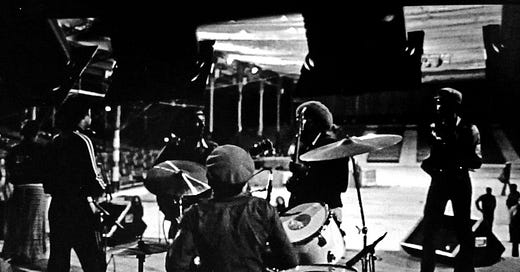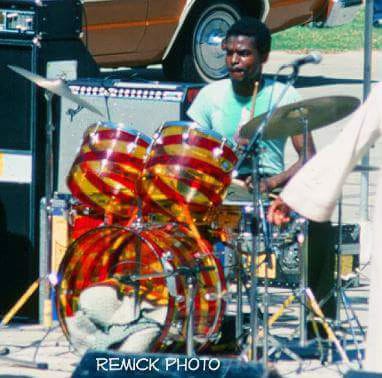Carlton "Carly" Barrett: A Reggae Drumming Legend
His style, drum kits, mixing and more
Having grown up with Marley’s music embedding itself into my young mind, my parents were big fans and had the albums on the turntable throughout the 70s, Carly Barrett’s style became a template for reggae drummers around the world. What struck me is that after all the years of listening to the intricate, subtle grooves and accents he’d play on the Marley albums, he could change it up and deliver this heavy syncopated groove heard on King Tubby Meets The Rockers Uptown. (more below).
The Brief Bio
Carlton "Carly" Barrett (1950-1987) was a groundbreaking Jamaican drummer whose rhythms became the heartbeat of reggae music. Best known as the drummer for Bob Marley and the Wailers, Barrett’s distinctive style introduced the iconic "one-drop" rhythm—a pattern that emphasizes the third beat and leaves space, allowing the music to breathe and groove deeply. His inventive playing defined classics such as "No Woman, No Cry," "Jamming," and "Exodus," shaping reggae’s golden era and influencing generations of drummers worldwide.
Born in Kingston, Jamaica, Barrett began his musical journey creating makeshift drums from paint cans before emerging alongside his brother, bassist Aston "Family Man" Barrett, as part of the legendary studio band The Upsetters. The brothers' formidable rhythm section eventually caught the attention of Bob Marley, leading to a musical partnership that lasted nearly two decades. Carlton Barrett's life was tragically cut short in 1987, but his legacy lives on, as his grooves continue to echo through reggae, dub, and popular music around the globe.
His drumming combined subtle hi-hat work, punchy snares, and tight, minimal-kick drum patterns. Barrett didn't rely on flashy fills or excessive complexity; instead, he focused on groove, dynamics, and feel. This understated yet innovative approach made him one of the most influential and instantly recognizable drummers in reggae history.
Check out the isolated drums from Lively Up Yourself below
Drum Kits Used by Carlton Barrett
Carlton Barrett, renowned for his work with Bob Marley and the Wailers, played various drum kits throughout his career:
Early Years (1970–1979): He often used rental or studio kits, favoring Ludwig drums when available.
Mid-1970s: Bob Marley purchased a natural-finish Ludwig kit for Barrett, which was used in Jamaica and at Tuff Gong Studio. Unfortunately, this kit was destroyed in a fire at the Green Mist nightclub around 1978.
Late Years (1979–1981): Barrett owned two Yamaha 9000 series birch kits.
Regardless of the drum kit, Barrett consistently used a Ludwig 402 snare drum (14"x6.5" aluminum alloy).
Studio Miking Techniques for Reggae Drums
Achieving Barrett's signature reggae drum sound involves specific miking techniques:
Close Miking: Each drum component, including the hi-hat, is closely miked. Typical microphone choices include:
Snare Drum: Shure SM57 on both top and bottom
Toms: Sennheiser MD 421
Kick Drum: Electro-Voice RE20 or a combination of Shure SM91 and Beta 52.
Overheads: Placed in close proximity to the cymbals, about six inches away, to capture the crispness of Barrett's hi-hat work.
Gating: During mixing, gates are applied to all drums (excluding the hi-hat) to control resonance decay, enhancing the attack on the kick and snare.
These techniques contribute to the tight, punchy drum sound characteristic of Barrett's recordings.
Aside from appearing on classic Bob albums, he also appeared on these iconic releases.
Blackheart Man by Bunny Wailer (1976).
Legalize It by Peter Tosh (1976).
King Tubbys Meets Rockers Uptown by Augustus Pablo (1976).







Still the king for me. A real jazz feel to lots of his syncopation and the deftest hi-hat touch ever recorded! ❤️